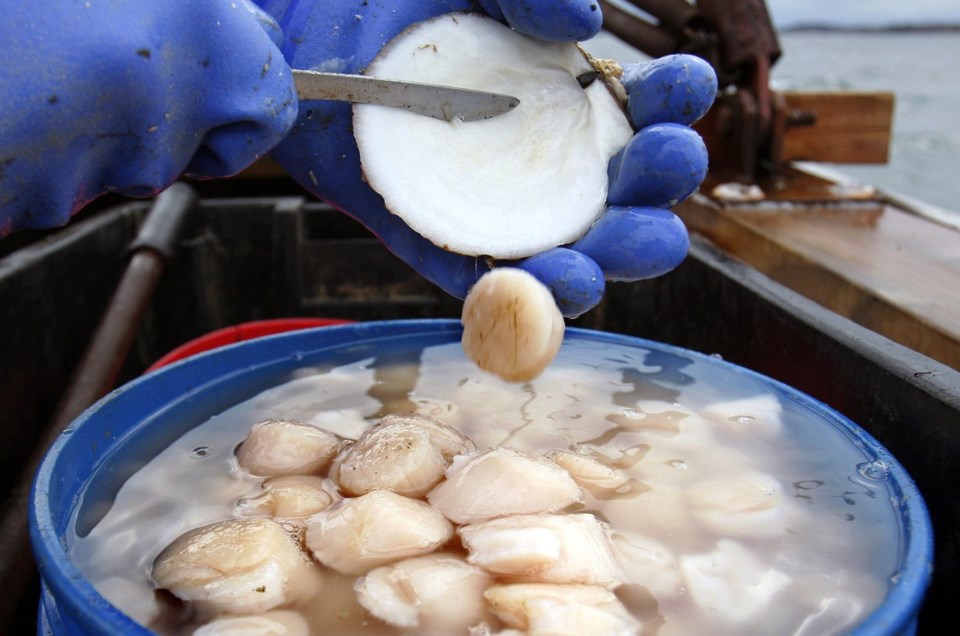PORTLAND, Maine (AP) — The volume and value of America's commercial fishing industry both fell according to newly released federal figures, though members of the industry said the decline was to be expected following a recent spike in supply.
The in the 50 states fell 2.6% to 8.4 billion pounds in 2022, according to the National Oceanic and Atmospheric Administration's “Fisheries of the United States” report, which the agency released this month. The same report said the catch was worth $5.9 billion at the docks in 2022, the most recent year with available statistics, and that was a drop of 11%.
America also ate a little bit less seafood in 2022, as per capita consumption fell about 3% to 19.8 pounds in 2022, the report said. However, 2021 was a historically high year for seafood consumption, and the supply of surged, said Gavin Gibbons, chief strategy officer with the National Fisheries Institute in Reston, Virginia.
A dip following a record year was not unexpected, Gibbons said Monday. He said there are other encouraging trends, such as that the top ten most consumed species make up 79% of total consumption.
“This illustrates that U.S. consumers are continuing to diversify their palate. For many years those 10 choices made up closer to 90% of total consumption,” Gibbons said.
The fisheries report comes out every year and is intended as a snapshot of the size and scope of the U.S. fishing industry. The report also stated that imports and exports of edible seafood both increased, while the U.S. seafood trade deficit increased 6% to more than $24.2 billion. The country's top seafood trading partners for exports include Canada, China and Japan.
The amount of seafood brought to the docks in the U.S. decreased in all parts of the country with the exception of the Gulf of Mexico, the report stated. However, the total catch and value were both higher than the figures for 2020, when the industry was disrupted by the COVID-19 pandemic, federal data show. The value of U.S. fisheries was also in line with the years previous to the pandemic, data show.
The port with the highest volume of catch was Dutch Harbor, Alaska, for the 25th consecutive year, the report said. However, the port with the highest valued catch in the nation was New Bedford, Massachusetts, for the 22nd consecutive year, the report said.
“Sea scallops have historically made up the majority of the value landed in New Bedford,” the report said.
The seafood species with the highest value in the country were salmon, , crabs, Alaska pollock and sea scallops, the report said. The top imported products were shrimp, salmon, lobster and crabs, and shrimp remained the most valuable import, it said.
Patrick Whittle, The Associated Press




